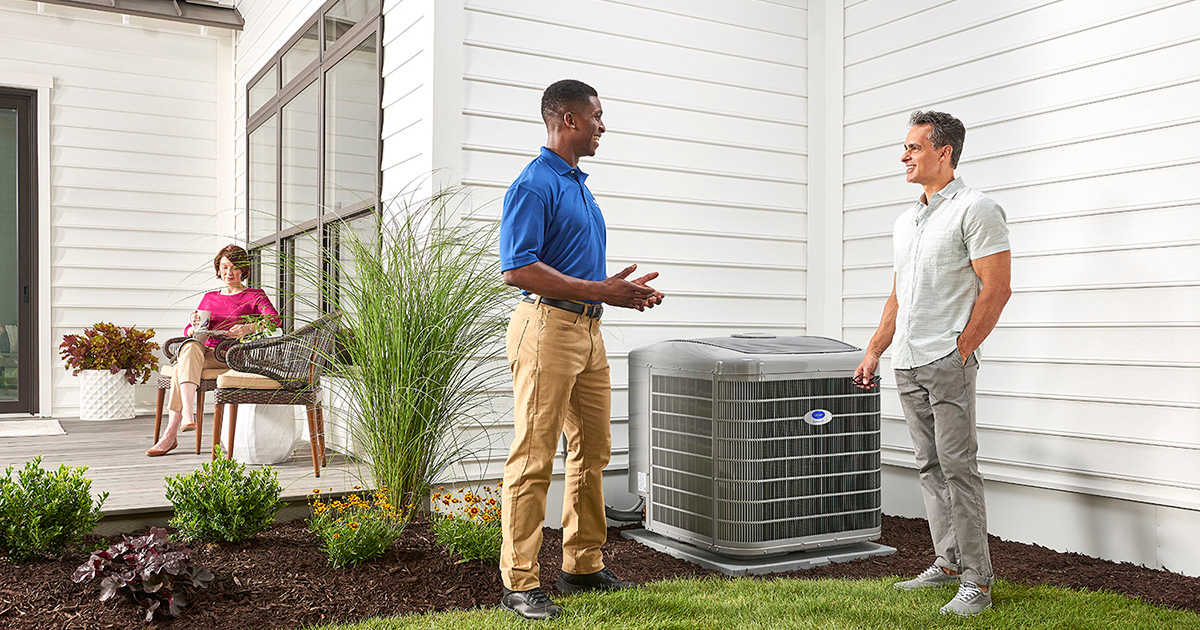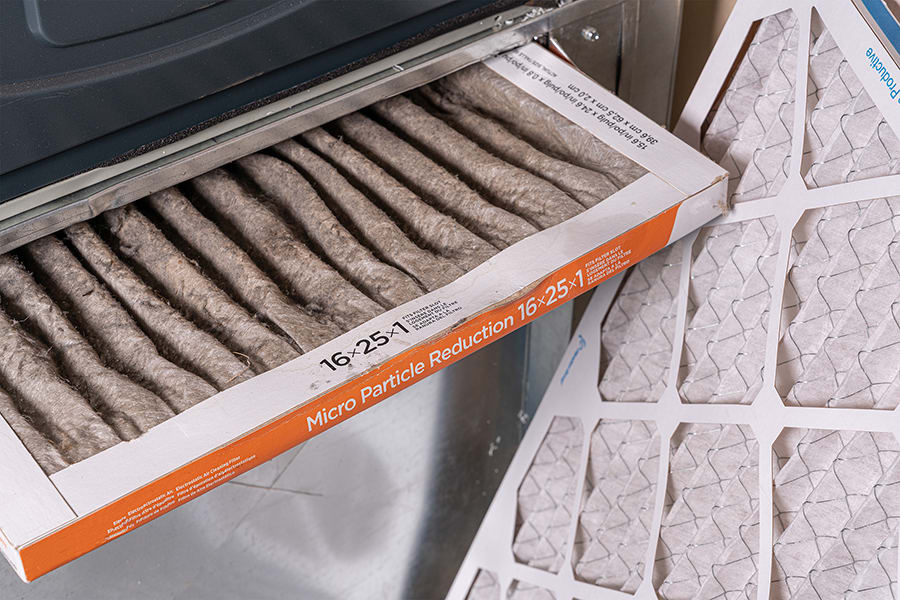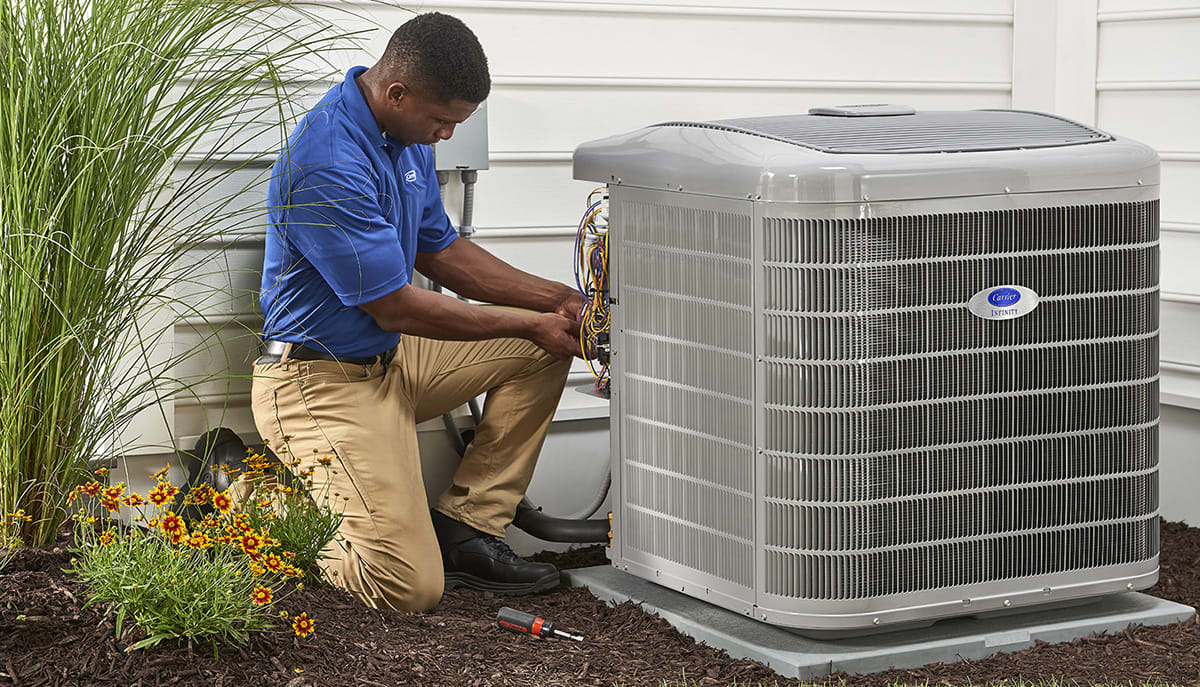Why is My AC Fan Not Spinning?
By Travis Baugh
Modern air conditioning... it’s a wonderful thing in the heat of summer when you can go inside and feel the relief from a hot, sticky summer day. That’s why it’s so upsetting to crank up your AC only to find the AC fan not working, and the temperature in your home rising. But before you totally lose your cool, take a few minutes to troubleshoot and see if it’s a problem you can fix or if it’s time to call your local Carrier HVAC expert for professional air conditioner repair.

8 Reasons Why Your AC Unit Is Not Working

Find yourself wondering "why is my AC fan not spinning"? Before you just assume it’s a bad fan, spend a few minutes determining whether other issues within your air conditioning system may be causing the problem. Your central air conditioner is a complex system with many components, and there are several issues that could be the reason your AC fan is not working.
Jennifer Fletcher, owner of Modern Air Solutions in Gurnee, IL, breaks down a few steps homeowners can take if their AC fan isn’t working.
“If the AC fan isn’t working, first confirm that the thermostat is set to cooling mode,” Fletcher said. “Next, try resetting the furnace breaker, followed by the AC breaker. If the system still doesn’t start, it’s time to call for service, as the issue is likely electrical.
Let's dive deeper into each of these troubleshooting steps.
1. Check Your Thermostat
Start by checking your thermostat. If the system is on, but set for heating instead of cooling, the system likely won’t operate. Switch it back to either cooling or auto mode (automatically switches between heating and cooling), and check that an appropriate cooling temperature is selected. According the Department of Energy, 78⁰F is a good setting for both comfort and energy efficiency when you are home.
If you have a programmable smart thermostat, check to be sure your comfort schedule is properly set for cooling at the time you are having the issue, and make adjustments if necessary.
2. Circuit Breaker is Tripped
If you are satisfied that the thermostat settings are correct, check your power supply. Your AC system runs on electricity, and there are typically three locations you can check to be sure the issue isn’t with power to the system. First, locate your main breaker box panel and make sure the AC system circuit breaker hasn’t been tripped. The outdoor unit typically takes 220v power to operate and should be on its own circuit. If that isn’t the issue, there is a power switch typically located on the air handler unit (furnace or fan coil) inside your home that looks similar to a light switch. It should be in the “on” position. If that’s not the issue, step outside and check the power disconnect for the outdoor unit. It is usually located in a separate box, usually mounted on the home near the outdoor unit. Make sure it is in the “on” position as well. If a fuse in this box is blown, that means it’s time to call your Carrier dealer for professional assistance.
If the issue is a tripped circuit breaker, keep in mind that it could have been caused by a power surge of some kind, possibly weather related. If the system continues to trip the circuit breaker, shut it down and call a professional HVAC technician.
3. Air Filter is Blocked
Another common and easily remedied situation that sometimes results in a central AC fan not working is a dirty, clogged air filter. Your system’s air filter traps dust, dirt and other airborne pollutants to keep indoor air and internal cooling system components cleaner. If it’s not cleaned or replaced regularly, a clogged air filter can restrict air flow to the point that it feels like the indoor fan is not properly circulating air. In extreme cases, restricted airflow can cause the entire system to shut down. If this is the case, simply changing the air filter should solve the problem.
For more information on changing the system’s air conditioner filter, take a look at our page on how often to change an air filter.

4. Broken Fan Blade
- The indoor fan, or “blower” as it is often called, is housed inside your furnace or air handler unit. It is responsible for blowing cold air out to your living areas, and pulling return air back into the system to be cooled by the evaporator coil.
- The outdoor fan, also called the condenser fan, is found in the outdoor unit. It is responsible for pulling air through the outdoor condenser coils to help remove heat from your home.
If your system is running but you hear unusual noise coming from the outdoor unit, you might have a bad fan or a bent or broken fan blade. To perform AC troubleshooting, turn off the system at the thermostat as a safety precaution. A broken or damage fan blade can be dangerous if the system turns on while you are inspecting it. Once you have ensured the system is turned off, go outside to the outdoor unit. The condenser fan motor and fan are typically mounted at the top in the center of the unit and are usually visible through the fan guard or wire grill. If a fan blade is cracked, loose or broken, it can cause unusual noises due to it being out of balance or physically striking other components in the outdoor unit. If you discover a broken or damaged fan blade, keep the system turned off and contact a local HVAC professional for repair.
5. Burnt Out Condenser Fan Motor
If the fan blades seem to be ok, turn the system back on and check that the outside condenser fan motor is operating properly. Vibration or noisy operation would signal the fan blades are likely out of balance. If the fan blades don’t spin at all, it’s likely the condenser fan is not working and possibly burnt out, requiring replacement. In either case, we recommend calling a professional HVAC technician to diagnose and remedy the problem.
6. Frozen Evaporator Coil
Air conditioner fans not working can be a sign of a frozen evaporator coil. The evaporator coil sits inside your home within the air handler unit (furnace or fan coil), pulling heat and humidity from indoor air as it passes through. The evaporator coil can freeze up as a result of indoor blower fan malfunction, low refrigerant charge, low outdoor temperatures, or other system malfunctions. Because a frozen evaporator coil can be the result of a blower fan stoppage or the reason the blower fan stops running, a frozen coil with fan stoppage should be diagnosed and remedied by your local Carrier expert.
7. Compressor is Not Working
Many of the malfunctions already discussed can ultimately damage the compressor. Your AC system’s compressor is mounted inside the outdoor unit and is responsible for circulating refrigerant through the system’s copper tubing and coils. If the power to your AC unit is on, and the thermostat is set properly, yet there is no noise coming from the unit, the problem may be a damaged or malfunctioning compressor. Replacing a compressor is a major operation, which should be performed by a licensed and experienced HVAC technician. This will likely also raise the question of whether it is time to replace the entire unit or do the repair.

8. Malfunctioning Run Capacitor
The outdoor unit of your AC system includes a smallish metal cylinder called a run capacitor that plays a large role in your system’s functioning. The run capacitor controls and supplies the electrical charge that starts and continues to operate the unit’s fan motor. If a run capacitor malfunctions, your AC system may not start, or it might start but continue to run, possibly making a humming sound. Other signs the run capacitor has malfunctioned include slow or delayed start-up, system shut down, or the AC system not blowing cold air. If you suspect a faulty run capacitor is the cause of your AC fan not working, contact a professional AC service technician. Capacitors can retain electrical charge and should only be replaced or handled by a licensed and trained professional. Learn more about AC capacitors.
FAQs ABOUT AN AIR CONDITIONER FAN NOT WORKING
If the AC fan is not working, you can follow these steps to troubleshoot and potentially fix the issue:
Step One: Ensure the thermostat is set to "Cool" and the temperature is set lower than the current room temperature. Set the fan to "On" to see if it starts running continuously.
Step Two: Locate the breaker box and check if the breaker for the AC unit has tripped. If it has, reset the breaker.
Step Three: Check the air filter for dirt and debris. A clogged filter can restrict airflow and cause the fan to stop working. Replace the filter if necessary.
Step Four: Turn off the power to the AC unit. Check for obstructions around the outdoor condenser unit, such as leaves, dirt, or debris. Clean the unit if necessary.
If you've tried these steps and the fan still doesn't work, it may be time to call your local Carrier dealer. They can perform more advanced diagnostics and repairs.
Here are some common signs and steps to diagnose a faulty AC fan motor:
- Fan Blades Not Spinning: If the fan blades are not spinning when the AC is on, it could indicate a problem with the motor.
- No Airflow: Lack of airflow from the vents when the system is running is a clear sign something might be wrong.
- Unusual Noises: Grinding, rattling, or buzzing noises coming from the outdoor unit or the fan itself can indicate motor problems.
- Overheating: If the motor becomes excessively hot to the touch, it may be overheating due to a malfunction.
- Intermittent Operation: The fan starts and stops sporadically or doesn’t run consistently.
- Burning Smell: A burning smell from the AC unit can be a sign of electrical issues or a failing motor.
An AC fan may not turn on due to circuit breaker or fuse issues, incorrect thermostat settings, a clogged or dirty air filter, a failed capacitor, fan motor issues, loose, frayed, or disconnected wires, faulty relays or contactors, a malfunctioning control board, or ice on the evaporator coils. If problems persist after checking on these common issues, connect with a Carrier HVAC professional.
If the fan on your air conditioner isn’t working, it could be due to power supply issues, a faulty thermostat, a dirty air filter, a failed capacitor, a malfunctioning fan motor, or blown fuses. Other potential causes include issues with relays, contactors, or the control board, as well as loose or broken wiring. Ice buildup on the evaporator coils can also block the fan. Turn off the power and inspect these components or call your local Carrier dealer for help.
Contact A Carrier Technician To Diagnose Why You Have an AC Fan Not Turning On
If you have a situation with a central air conditioner fan not working and you have exhausted the troubleshooting steps outlined previously, it’s time to schedule an AC maintenance appointment with a certified HVAC technician. Your local Carrier HVAC dealer offers the expertise needed to properly diagnose and service an AC fan not turning on.
- Common reasons for Air Conditioner Not Cooling
- How Long Do AC Units Last?
- Understand why does my AC smell?
- Discover causes of an AC short cycling
- Learn about Air Conditioner Coil Cleaning
- In need of air conditioner parts or equipment?

